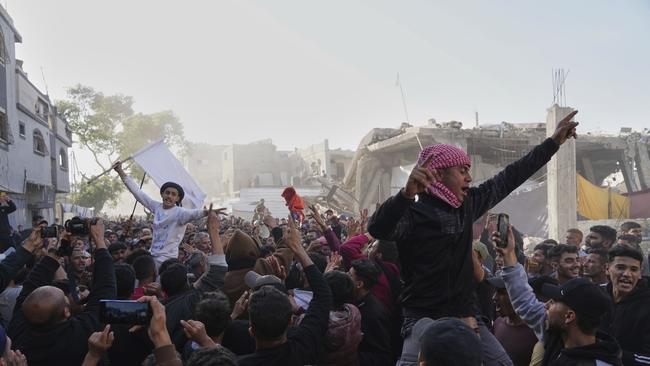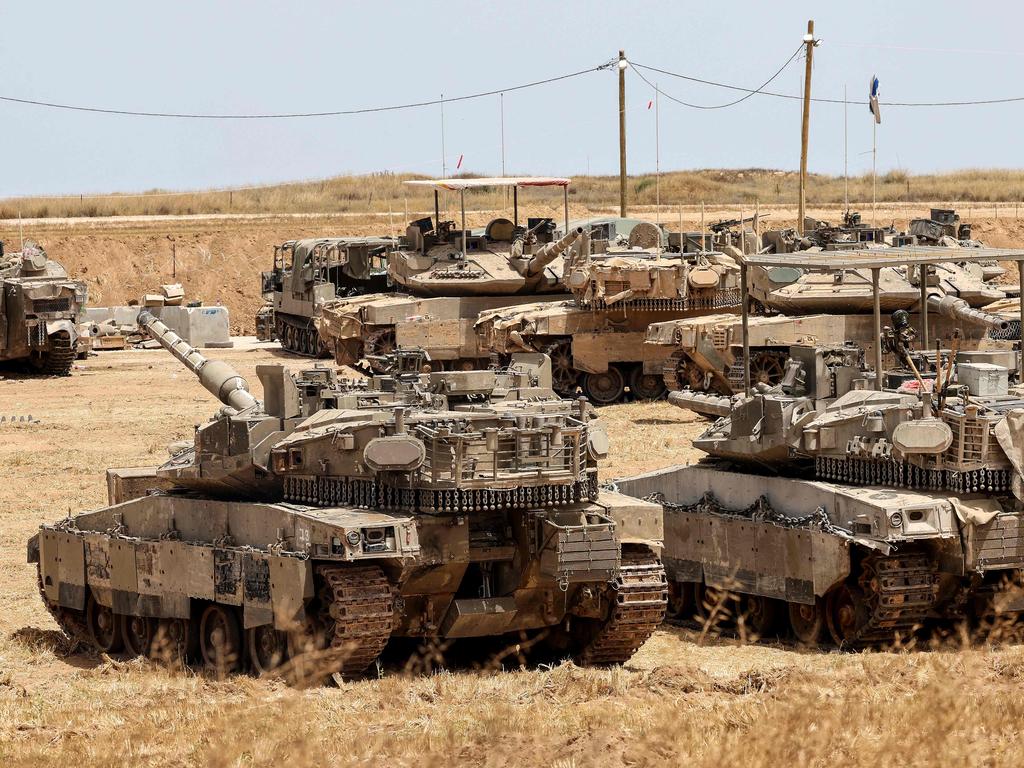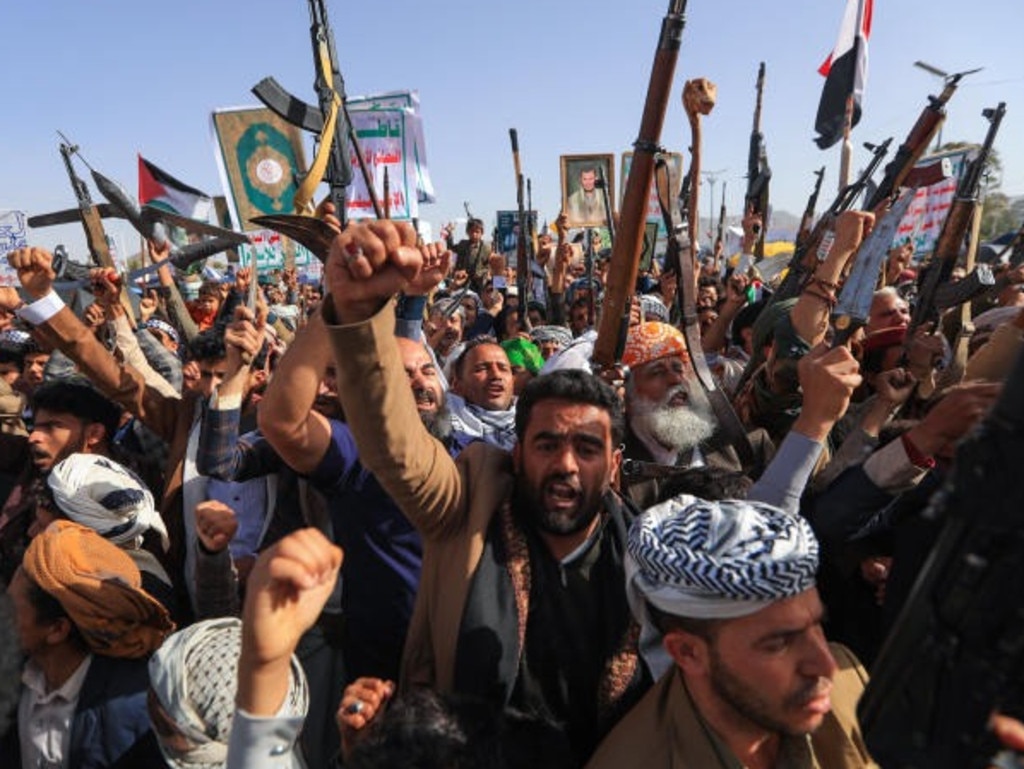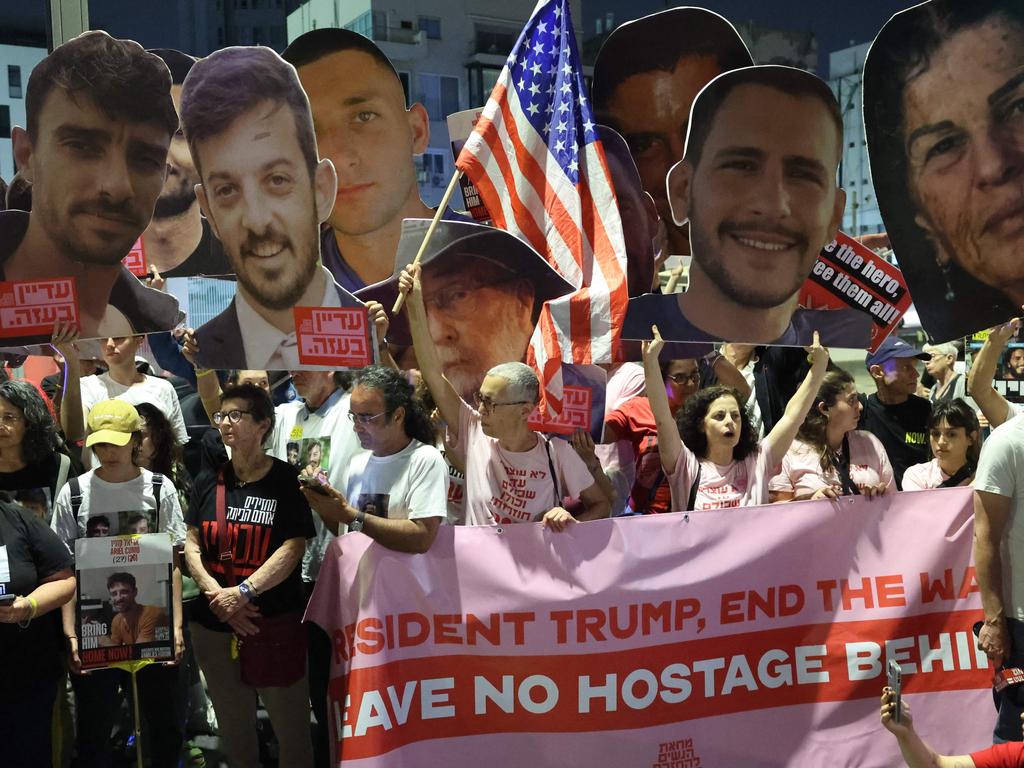Long-suffering Palestinians direct their anger at Hamas
Pressure is building on Hamas from different fronts – not least of which is the growing anger among ordinary Palestinians who have had enough.

As the Gaza war nears its 20th month, pressure is building on Hamas from different fronts – not least of which is the growing anger among ordinary Palestinians who have had enough of the hunger, sleeplessness and the ever-present threat of Israeli air strikes.
Israel says it has started to expand its military offensive in the Gaza Strip, potentially displacing more Palestinians and occupying territory.
The spectre of starvation is growing from two months of Israel blocking humanitarian aid into the besieged enclave after a fragile ceasefire broke down.
A US-backed aid distribution is being planned, which Israel says would prevent Hamas profiting from seizures of food and fuel deliveries to civilians.
An Israeli air strike this week targeted Mohammed Sinwar, Hamas’s top leader in Gaza, which if proven successful would be a big blow to the militant group.
But few expected Hamas to be wrestling with the most visible internal challenge to its authority since it seized control of the Gaza Strip in 2007: the people it professes to represent.
Hamas has ruled harshly, often jailing and killing its critics or threatening them into silence. Yet a simmering, continuing resistance has added to the pressure on Hamas, especially in northern Gaza, where the town of Beit Lahiya has been the epicentre of anti-Hamas protests since March.
The demonstrations quickly spread to other parts of the Gaza Strip. Chanting “Hamas out”, large crowds, often at great risk, have demanded an end to the war and Hamas to cede control of the enclave. Since then, smaller but boisterous protests have taken place, where fear of Hamas has seemingly evaporated.
On social media, influencers – many of them Palestinians based in Egypt, Turkey, Europe and the US – are urging Gazans to rise against Hamas and amplifying the protests globally.
They are filling a void created by militant threats against journalists in Gaza, forcing many reporters to self censor their coverage of opposition to Hamas, said the Committee to Protect Journalists.
“I consider myself the voice of the protests,” said Hamza al-Masri, a Turkey-based influencer, who has more than 1.2 million followers across several platforms. “Hamas has terrorised people in Gaza.”
What is unfolding in Beit Lahiya and on social media opens a window into how Hamas misinterpreted the shift in sentiments of many Gazans. It also represents an unprecedented collective defiance against the militants.
“The general feeling among Palestinians all over Gaza, not just Beit Lahiya, is that Hamas doesn’t care about their lives or suffering,” said Mkhaimar Abusada, a professor of political science at Al-Azhar University in Cairo. “The general feeling is Hamas cares more about its own survival.”

In recent days, the pressure on Hamas has intensified. Early on Friday, Israeli air strikes targeted Beit Lahiya and nearby Jabaliya camp, killing scores of people, according to the Hamas-run Gaza health ministry.
In a statement, the Israeli military said its air force had struck more than 150 targets throughout the strip, including terrorist cells and military structures. Later, the Israeli military said it had been conducting strikes and mobilising troops as part of an expanded offensive to take control in parts of Gaza.
The strikes are generating more discontent.
“People are very angry,” said Ahmed al Masri, 26, an activist in Beit Lahiya who says he has no connection to Hamas, after the air strikes.
“There is no safe place. What’s happening to us at the hands of both the occupation and Hamas is absurd and insane. This rage is against Israel and Hamas.”
The Wall Street Journal






To join the conversation, please log in. Don't have an account? Register
Join the conversation, you are commenting as Logout